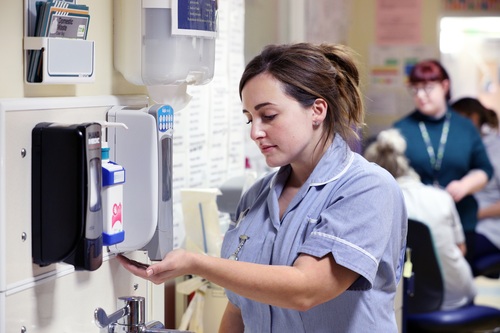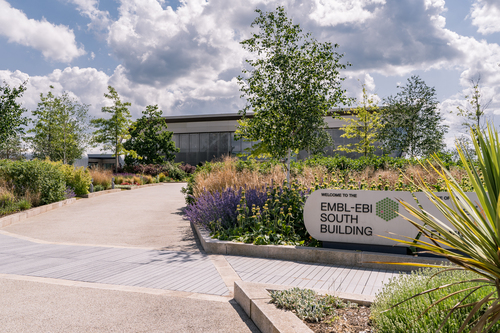Fantastic bacteria and where to find them: tracking hospital transmission with WGS
Posted on July 20, 2023 by Dr Leah Roberts, Dr Estée Török and Dr Zamin Iqbal
Dr Leah Roberts, Dr Estée Török and Dr Zamin Iqbal take us behind the scenes of their latest publication, 'Long read sequencing reveals genomic diversity and associated plasmid movement of carbapenemase-producing bacteria in a UK hospital over six years’ published in Microbial Genomics.
Despite the good that microbes do on our planet, those that cause disease have been a significant problem throughout human history. In our continual effort to combat infectious diseases, scientists have developed more and more sophisticated methods of both treating and tracking pathogens in people and the environment. More recently, the ability to sequence the DNA of microbes has had a revolutionary impact in the last decade on how we detect these pathogens in people and the environment.
My colleagues and I are one of many research groups globally interested in the use of genome sequencing to identify and detect when bacteria move in hospital settings. Resistant to antimicrobial treatment is one of the main problems in hospitals and is where the majority of infection control effort is placed. By focusing on the bacteria that harbour genes that give them the ability to tolerate antimicrobial treatment, we can collect and sequence these bacteria over time to deduce how they are transmitting between patients. This helps to inform infection control policies and reduces onward transmission.
In this study, we were fortunate enough to have an incredibly talented hospital infection control team who were interested in using “genomics” (the study of DNA and the genome) to better understand how their policies were helping patient outcomes. Our questions were simply: [1] what antimicrobial resistant bacteria were circulating in the hospital, [2] what genes provided that resistance, and [3] how are these bacteria/genes moving within the hospital?

Between 2014-2020, all bacteria with “carbapenemase” genes (a type of resistance gene that gives resistance to one of our most important antibiotics) were collected from the Cambridge University Hospitals NHS Foundation Trust (CUH). After sequencing the DNA of these bacteria, we found 15 different bacterial species and 20 different carbapenemase genes. Most of the bacteria were one of two species, E. coli and Klebsiella pneumoniae, and mainly found in the gut of patients (71% from rectal swabs). Only one significant outbreak occurred during the study and involved a sequence type (ST)78 K. pneumoniae carrying a “New-Dehli-metallo-beta-lactamase” (NDM) gene. Not only was this (as far as we know) the first reported outbreak of this strain globally, but we actually could not find much evidence of this strain outside of CUH, indicating that there may be some specific reservoir in CUH itself.
When looking at how the resistance genes were moving, we found that in 86% of bacteria they resided on DNA entities called plasmids. Plasmids are small, circular DNA that exists in bacteria and move between bacterial cells, facilitating the transfer of antibiotic resistance genes between lots of different bacteria. Using plasmid clustering methods based on the DNA sequences, we estimated that approximately 30% of these plasmids had been acquired via horizontal (i.e. cell-to-cell) transmission.

European Molecular Biology Laboratory - European Bioinformatics Institute South Builfing.
While we were able to piece together a detailed overview of CUH over six years, there were many areas we identified that could be improved upon. Firstly, our sampling was unable to discriminate where the bacteria truly originated from (within the hospital or outside the hospital?). This was because (i) a sample was not able to be taken on admission (only 48 hours thereafter, and as such deemed as “hospital onset”), or (ii) the patient had prior hospitalisation in the preceding 12 months, and therefore deemed as “healthcare associated" as they could have acquired the bacteria in their last hospital visit. Understanding the true circulation of these bacteria in the community would be valuable in designing more targeted infection control policies.
Additionally, as we were focused entirely on resistant pathogens of a certain type (i.e. those that had a carbapenemase gene), we were unable to observe other antimicrobial resistant pathogens, nor the background level of “sensitive” (i.e. not resistant) bacteria. Using non-selective methods to get a broader overview of pathogen potential in hospitals could provide valuable insight into pressures leading to how resistance evolves in these settings.
Overall, while genomics in hospital settings could be considered a mature field, the questions we now face as researchers and health care professionals are (a) should we move towards a more standardised implementation of genomics for infection control in hospitals, and (b) how can we share this information to better inform public policy on a national and international scale? Both these questions have no simple answer, as there are many considerations such as manpower, resources, training, ethics, and the specific needs of each healthcare setting. In the short-term, a national framework that supports ongoing within-hospital pathogen surveillance would enrich our surveillance of resistant pathogens circulating in hospitals and provide actionable data to infection control staff locally and nationally.
Thumbnail and header image credit: Cambridge University Hospitals NHS Foundation Trust

